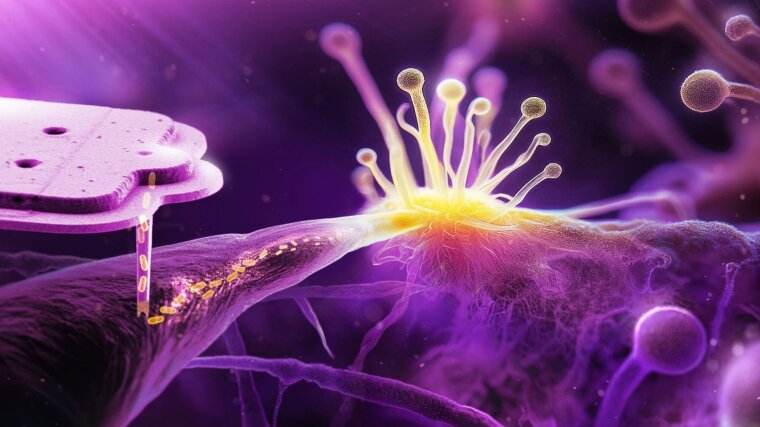
- Life
Published: | By: Maria Schulz/Axel Burchardt
Source article
Current findings from a Jena-Zurich research project form an important basis for the creation of artificial symbioses with specific properties that could be used for biotechnological applications in the future. For example, they could be used in Medicine, agriculture or environmental technology to protect plants against illnesses or to modify fungi so that they produce certain enzymes or active pharmaceutical ingredients.
The interdisciplinary project involved researchers led by Christian Hertweck, Professor at the University of Jena and Head of Department at the Leibniz Institute for Natural Product Research and Infection Biology - Hans Knöll Institute - Jena (Leibniz-HKI) and the research group led by Julia Vorholt, Professor of Microbiology at ETH Zurich. The study was based on a natural fungal-bacterial symbiosis discovered at the Leibniz-HKI.
The ETH Zurich researchers developed an innovative method for the precise implantation of bacteria into fungal cells and used evolutionary experiments to show how the symbiosis can be stabilised. The Jena team focused on the chemical and microbiological analysis of the interaction. The researchers investigated which chemical substances are produced by the introduced bacterium in its new fungal host. The project also enriches the "Balance of the Microverse" Cluster of Excellence, which researches the formation and balance of microbial communities.
Unusual communities and invaders
In the study, two different types of bacteria were injected into the cells of the fungus Rhizopus microsporus: Escherichia coli and Mycetohabitans rhizoxinica. While E. coli triggered a rapid defence reaction of the fungus, the bacteria of the genus Mycetohabitans managed to settle in the fungal cells and even enter the spores. This is a crucial step in order to be passed on to the next generation of fungi.
Initially, the infected spores germinated less frequently and the new fungi grew more slowly. By specifically selecting those fungi that successfully passed on bacteria to their offspring, the fungus was able to recover. Over several generations, the partners adapted to each other and optimised their cooperation. The researchers also discovered that the guest, together with its host, produced biologically active molecules that could support the host in obtaining nutrients and in defence against predators such as nematodes or amoebae.
Fragile systems
In their study, the researchers were able to show how fragile early endosymbiotic systems are. "For new endosymbioses to develop and stabilise, there needs to be an advantage to living together," emphasises Julia Vorholt. The requirement for this is that the guest has characteristics that favour endosymbiosis. For the host, it is an opportunity to acquire new characteristics in one fell swoop by incorporating another organism, even if this requires adaptation.
Original publication:
Giger GH et al. (2024): Inducing novel endosymbioses by implanting bacteria in fungi. Nature. https://doi.org/10.1038/s41586-024-08010-xExternal link
Beutenbergstraße 11a
07745 Jena Google Maps site planExternal link